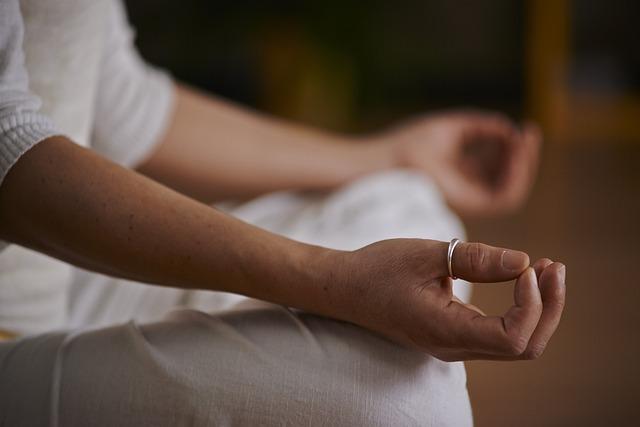In the serene aftermath of childbirth, new mothers often find themselves navigating a whirlwind of emotions, responsibilities, and physical changes. Amidst the coos of their newborn and the flurry of diaper changes, many mothers seek solace and rejuvenation in the gentle practice of yoga. Postnatal yoga, with its promises of restoring balance and nurturing well-being, emerges as a beacon of tranquility. However, beneath the calm facade lies a question that echoes in the minds of many: Can postnatal yoga, in its pursuit of healing, inadvertently overexert the very women it aims to support? As we delve into the world of postnatal yoga, we explore the delicate balance between recovery and resilience, unraveling the myths and realities of this ancient practice in the modern age.
Balancing Act: The Physical Demands of Postnatal Yoga
Finding the right equilibrium in postnatal yoga can be a delicate journey for new mothers. The practice is designed to aid recovery, offering gentle movements that promote healing and relaxation. However, it’s crucial to recognize that each woman’s body responds differently to the postpartum phase. What may feel invigorating for one might be overwhelming for another. Listening to one’s body becomes paramount, allowing new mothers to tailor their yoga practice to their unique needs and energy levels.
Key to achieving this balance is understanding the body’s signals. New mothers should watch for signs of overexertion, such as persistent fatigue, increased soreness, or emotional overwhelm. Here are some considerations for ensuring a safe and nurturing yoga experience:
- Start slow: Begin with gentle poses and gradually increase intensity.
- Focus on breath: Prioritize breathing exercises to enhance relaxation and stress relief.
- Seek guidance: Consider classes specifically tailored for postnatal recovery.
- Modify as needed: Adapt poses to accommodate physical comfort and limitations.
In essence, postnatal yoga should be a supportive ally, not an added pressure, in the journey of motherhood.

Understanding the Bodys Limits After Childbirth
After the incredible journey of childbirth, it’s crucial to recognize and respect the body’s natural boundaries. Postnatal yoga can be a gentle and effective way to ease back into physical activity, but understanding when it might become too much is essential. The postpartum body is still undergoing significant changes and healing, so awareness and moderation are key. Here are some considerations for new mothers exploring postnatal yoga:
- Listen to Your Body: Pay close attention to any signals of discomfort or pain. It’s essential to differentiate between the natural stretching of muscles and overexertion.
- Gradual Progression: Start with simple poses and gradually increase intensity. This approach helps to build strength without overwhelming the body.
- Focus on Breathing: Incorporating breathing exercises can enhance relaxation and help manage stress, supporting both physical and emotional recovery.
- Consult Healthcare Providers: Before beginning any postnatal exercise regimen, including yoga, consulting with a healthcare provider ensures that the chosen activities align with individual health needs.
By embracing these principles, new mothers can engage in postnatal yoga that supports their recovery journey without pushing beyond their body’s current capabilities.

Expert Opinions on Safe Practices for New Mothers
Postnatal yoga can be a gentle way for new mothers to reconnect with their bodies, but it’s crucial to approach it with care. Experts advise starting with light stretches and poses, focusing on breathing and mindfulness rather than intense physical exertion. Key recommendations include:
- Consult with a healthcare provider before beginning any new exercise regimen.
- Start with beginner-friendly poses and gradually increase intensity.
- Pay attention to the body’s signals, stopping if any discomfort or pain arises.
Certified yoga instructors emphasize the importance of tailoring routines to individual needs, as each mother’s recovery journey is unique. They suggest integrating yoga with other postnatal care practices to foster holistic well-being, ensuring both physical and mental recovery.

Crafting a Gentle Routine: Tailored Yoga Recommendations
Postnatal yoga can be a nurturing path for new mothers, offering a gentle way to reconnect with their bodies. However, it is crucial to adapt each session to accommodate the unique needs of postpartum recovery. Here are some tailored yoga recommendations to ensure a balanced and beneficial practice:
- Focus on Breathwork: Emphasizing pranayama techniques can help calm the mind and promote healing. Simple deep breathing exercises can enhance relaxation and provide mental clarity.
- Gentle Poses: Incorporate poses like Child’s Pose and Cat-Cow Stretch to gently stretch and strengthen the body without overexertion.
- Core Restoration: Engage in movements that gently activate the core, such as Pelvic Tilts, to rebuild strength without straining the abdominal area.
- Restorative Practices: Include restorative poses like Legs-Up-the-Wall to promote relaxation and reduce fatigue.
Remember, the journey into motherhood is personal and varied, so listening to your body and respecting its limits is paramount. By weaving these practices into your routine, you can create a yoga experience that is both soothing and supportive.

